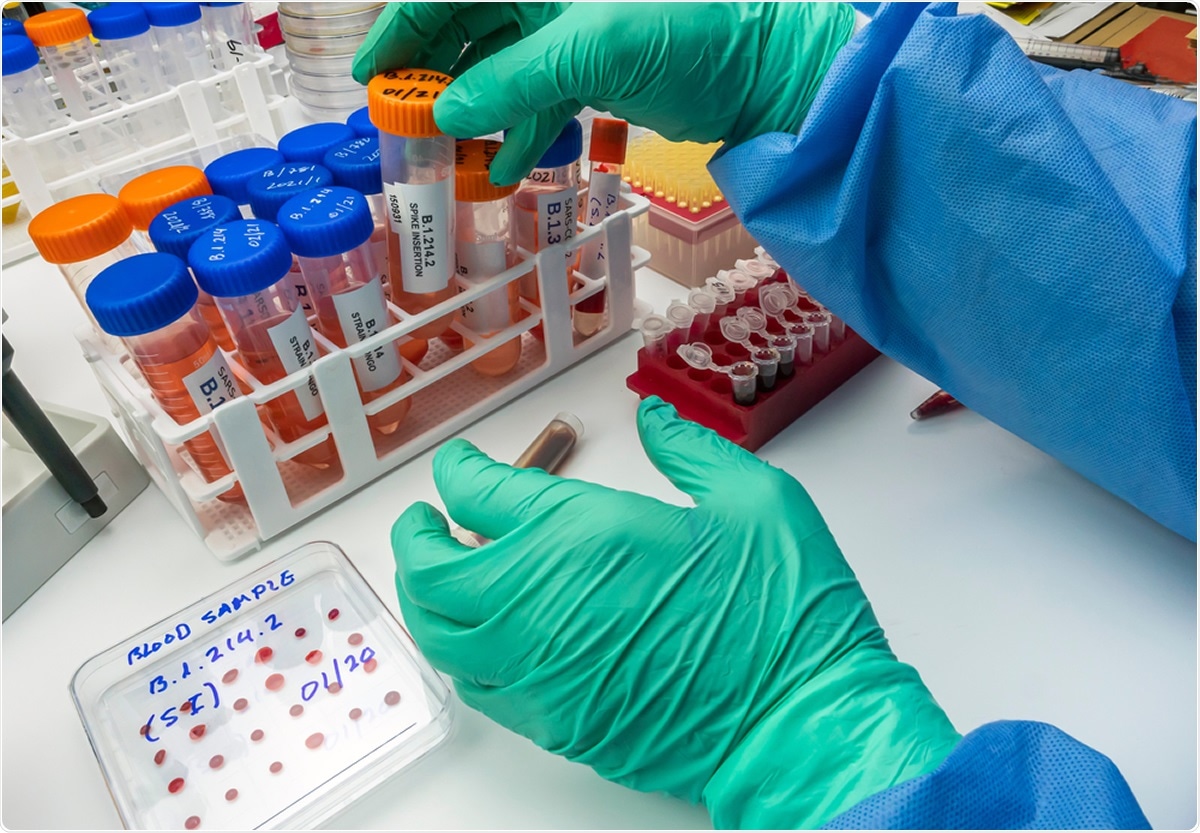A possible human-to-canine transmission of SARS-CoV-2
The coronavirus disease (COVID-19) pandemic, caused by the severe acute respiratory syndrome coronavirus 2 (SARS-CoV-2), continues to spread across the globe.
The virus first emerged in Wuhan City, China, in late December 2019, with scientists pointing to pangolins as intermediate hosts. Since SARS-CoV-2 is a zoonotic pathogen, it can jump from animals to humans. As the pandemic evolves, scientists are trying to determine the possible causes of virus transmission from infected individuals to animals.
Now, researchers at the U.S. Centers for Disease Control and Prevention (CDC) identified a case of human to animal transmission when SARS-CoV-2 was detected in a healthy poodle dog living with four family members who had COVID-19.
In the study, published in the journal Emerging Infectious Diseases, the researchers observed antibodies in blood samples from the dog, showing seroconversion. This implies that the dog has acquired SARS-CoV-2 from its owners, who were also infected.

Zoonosis in COVID-19 pandemic
The COVID-19 pandemic stemmed from a likely spill-over from an unidentified animal host. From there, the virus was transmitted from people to people, reaching 192 countries and regions.
Previous reports showed that the virus could be transmitted to animals. Dogs and cats, to which some coronaviruses are endemic, are also vulnerable to SARS-CoV-2 infection. Although COVID-19 is mainly transmitted from person to person, the potential epidemiological consequences of animal susceptibility remain unclear.
SARS-CoV-2 infection in dogs
In the current study, the researchers characterized the complete genome of the SARS-CoV-2 isolate detected in a dog, a 1.5 years old female poodle. The dog lived with four family members in Bitonto, Italy.
On October 31, 2020, one of the members, the 54-year-old mother, developed COVID-19 signs and symptoms, including fever, cough, and the loss of smell and taste. When the woman underwent rapid antigen testing on November 3, 2020, she tested positive for SARS-CoV-2.
Nasopharyngeal swab samples were collected by the local health agency and tested through molecular testing to confirm SARS-CoV-2 infection. All the other family members, the husband, and two daughters were tested. The family members also developed signs and symptoms of COVID-19, such as fever, mild fatigue, and moderate respiratory signs.
By November 4, 2020, the dog owners collected oral and nasal swab samples from the dog. The pooled samples collected were tested positive for SARS-CoV-2 via the real-time reverse transcription-polymerase chain reaction (RT-PCR).
The owners collected oral, nasal, and rectal swab samples from the dog over the next 11 days. The team found that out of the 20 samples collected. Four samples tested positive for SARS-CoV-2. These samples were collected between November 6 and 15, 2020.
Although positive samples were obtained, the dog did not show clinical signs, and viral shedding occurred at low levels or titers.
The researchers also aimed to determine the presence of antibodies against SARS-CoV-2. They tested a serum sample collected by the veterinarian on November 27, with two commercially available enzyme-linked immunosorbent assay (ELISA) tests – the ID Screen SARS-CoV-2 Double Antigen Multi-species and the Eradikit COVID-19-multispecies.
Further, the team also performed a plaque reduction neutralization test (PRNT) and a virus neutralization test (VNT). The used serologic assays to validate the presence of antibodies against SARS-CoV-2.
All the samples were submitted for next-generation sequencing, obtaining complete genomes using the pipeline SARS-CoV-2 RECoVERY in the Galaxy public server. The team noted that the two SARS-CoV-2 genomes shared 100 percent nucleotide identity.
The full-length genome sequencing that the dog and human viruses were identical, hinting a human-to-animal transmission in the household.
More than 163 million cases of COVID-19 have been reported to date worldwide, of which 3.38 million have been fatal.
The United States reports the highest number of COVID-19 cases, reaching 32.99 million cases and about 586,000 deaths. India and Brazil follow, with over 25 million and 15 million cases, respectively.
- Center for Systems Science and Engineering (CSSE) at Johns Hopkins University (JHU) – https://gisanddata.maps.arcgis.com/apps/dashboards/bda7594740fd40299423467b48e9ecf6
- Decaro, N., Vaccari, G., Lorusso, A., et al. (2021). Possible Human-to-Dog Transmission of SARS-CoV-2, Italy, 2020. U.S. Centers for Disease Control and Prevention (CDC)’s Emerging Infectious Diseases. https://wwwnc.cdc.gov/eid/article/27/7/20-4959_article
Posted in: Medical Science News | Medical Research News | Disease/Infection News
Tags: Antibodies, Antigen, Assay, Blood, Coronavirus, Coronavirus Disease COVID-19, Cough, Enzyme, Fatigue, Fever, Genome, Infectious Diseases, Nucleotide, Pandemic, Pathogen, Polymerase, Polymerase Chain Reaction, Research, Respiratory, SARS, SARS-CoV-2, Severe Acute Respiratory, Severe Acute Respiratory Syndrome, Syndrome, Transcription, Virus, Zoonosis

Written by
Angela Betsaida B. Laguipo
Angela is a nurse by profession and a writer by heart. She graduated with honors (Cum Laude) for her Bachelor of Nursing degree at the University of Baguio, Philippines. She is currently completing her Master's Degree where she specialized in Maternal and Child Nursing and worked as a clinical instructor and educator in the School of Nursing at the University of Baguio.
Source: Read Full Article


